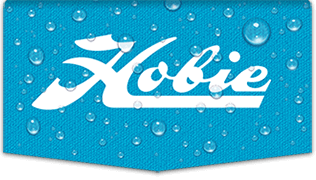I believe Hobie suggests 16 to 25 lbs to “break” loose the kick-up fin. If setting to a “loose” screw, there would be no use to have the kick-up fin… yes? no?
Oh I'm sorry, you seem to be talking about a "kick up" tension; I was talking about "fin pitch" tension screws which used to be the only tension setting. It is exactly analogous to propeller pitch, but might be omitted in new kick up designs.
For anyone that can adjust fin pitch, for the record here is one of the most gravitas posts on the subject from "Hobie approved guru" Roadrunner in thread
where high tension settings are advised against.
Those who have Turbofins have probably noted information from the instruction sheet pertaining to tuning the fins. It states "By having more tension in the fins, they become stiffer and faster with more resistance on the pedals." I decided to find out what might be the most efficient setting for cruising speeds.
Pedaling at 60 cycles per minute over a 107 yard course, I recorded boat speed for each setting: loose (see picture below), medium (tightened 1/8") and tight (tightened an additional 1/16"). Each setting was run four times on each fin independently to minimize error.
Image
Resulting speeds varied only about 2%; pedal effort was noticeably different though. The tighter the fin clew, the more effort was needed to maintain pedaling speed. This effect was more pronounced with the front fin than the rear fin. Technically, the
fastest speed obtained was, front fin = loose; back fin = medium. This makes sense, as the rear fin gets a deflected slipstream from the front fin. The effect was weak though and may not be worth the extra pedal effort.
The bottom line is, loose clews give virtually the same performance for significantly less effort at cruise speeds. Less effort translates to less fatigue over longer distances.
What about sprint speeds? Sorry to say, I actually went faster with relaxed clews (loose fins) than tight fins. Like a propeller blade, the fins need to be able to develop a pitch (i.e. flex) to generate forward thrust. Very tight clews restrict pitch and end up wasting energy by batting water back and forth.
What is the optimal setting? I like to set the back edge of the fin about 1/8 inch in the outhaul slot, just enough so it doesn't pop out when flexed. See picture above.
As a second check, I look for at least 1/4 inch fin retraction space on the mast (if possible) so it can "wind up" the mast to allow the necessary flex as it moves from side to side. This is also a good way to set up the fins on the older style Drive (different outhaul).
Speed limitations? Even with speeds exceeding 9 MPH on boat wakes and 11 MPH on the AI (sailing), the fins are still pulling when set this way.
Are the Outhaul Adjustment Screws a waste? Not at all! There have been small changes to the mast lengths and fin styles. Additionally, there is some suggestion that the rear fin may benefit slightly by a little tighter setting. The Adjustment screws allow corrections for all of the above, as well as accommodating personal tastes of different individuals and further experimentation.

Note: This article applies to ST Turbofins only, not necessarily ST fins. STs should be calibrated separately.





